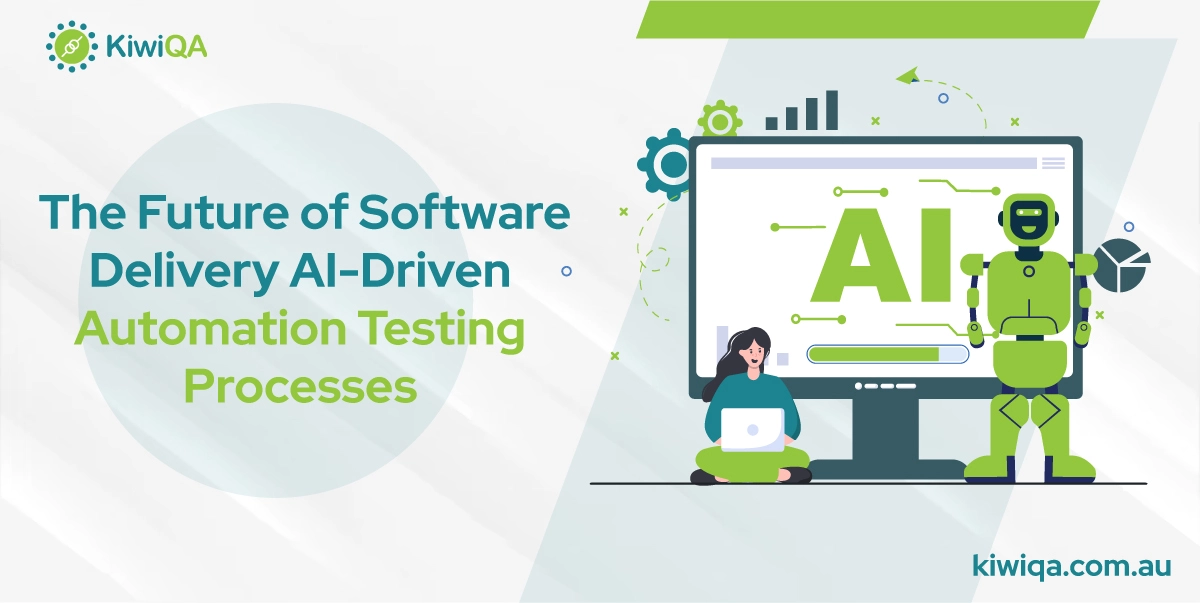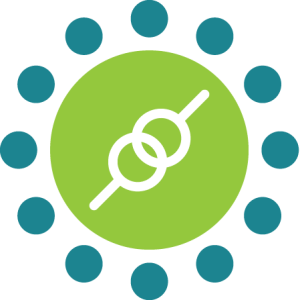The Future of Software Delivery AI-Driven Automation Testing Processes

 KiwiQA
KiwiQAIn the growing environment of IT software development, AI automation testing acts as the transformative force. Now the QA automation company promises to deliver a seamless, functional, adaptive learning environment with frequent improvement. AI automates the manual tasks & frees human testers to prioritize the strategic assurance aspects.
Software automation testing services are a major aspect of the SDLC lifecycle to deploy a reliable & quality product. Rigorous testing process enhances user experience & builds trust in apps. Traditional automation testing is effective to automate repetitive tasks, drive test execution time & cut down the error possibilities.
Well, automation comes with high costs, since it requires coding skills & regular maintenance of scripts. The latest release in test automation is AI-powered automation testing. Statista reports said that the global AI software testing industry is expected to reach a remarkable growth of $126 billion by 2025.
AI-driven automation testing is more reliable, faster & effective. It detects the conventional testing limitations by incorporating NLP, ML & predictive analytics. This blog defines the benefits of AI-driven QA automation services & how it is reshaping the future of software delivery.
Rapid evolution in software development has been fueled by the demand for greater productivity, flexibility, and teamwork. Every stage of development has its own unique stories, innovations, and difficulties, ranging from the strict Waterfall technique to the adaptability of Agile and the teamwork of DevOps.
The first approach to SDLC, the Waterfall model, was developed in the 1970s. It is simple to comprehend the project budget, schedule, and resources needed at each step when there are clearly defined stages. Its main disadvantage, meanwhile, is exactly this stiffness. After a stage is finished, it is tough to make any alterations. Waterfall is not appropriate for projects with changing needs or uncertain situations because of its lack of flexibility.
The inflexibility of Waterfall prompted software development teams to look for a more flexible method, such as an agile QA automation approach. Projects using agile development are broken up into manageable, brief iterations called sprints, which usually run two to four weeks. Teams discuss progress with stakeholders on a frequent basis, allowing for real-time feedback and modifications. Agile, however, may find it difficult to scale consistently across big organizations. Agile automation testing process is extensively used in the IT sector, particularly in software, app, and startup development.
As businesses saw the need for quicker, more dependable software deployment, DevOps developed in the mid-2000s. DevOps QA automation services enable teams to identify and fix problems more quickly, enhance communication, and shorten deployment times. While monitoring guarantees dependable and high-quality performance, automation reduces human mistakes. But making the switch to DevOps might be difficult. DevOps adoption necessitates a large investment in training, tool implementation, and reconsidering current workflows, all of which may be resource-intensive for businesses.
The unconfirmed project development environment is the basic SDLC challenge. The dependencies on a system, a huge number of components, and interactions make it tough to understand, manage & maintain the system. You won’t be able to start the project in time because this complexity impacts the development cycle & testing efforts.
The frequent changes in the requirements & expectations among customers impact the delivery of the product. 33% of developers claimed designing products with unstated requirements was their biggest challenge. To deal with the complexity, establish strong communication & systematic processes. Ensure the final product outcomes match the user’s expectations.
Estimation of time & resources is another challenge. It’s always necessary to set a realistic deadline & budget constraints for users. The developers know the exact time they require to invest in a project, from bug fixing to improving & integrating advanced features.
When a developer has limited time, they might not operate well. The best way to prevent this challenge is through time management from the beginning of the project. Developers must prioritize their duty & decide which tasks need to be done in a specific timeframe.
AI automated SDLC includes adoption of ML algorithms, predictive analytics & NLP. Unlike traditional automation testing, AI testing tools make software more resilient & precise. AI automation testing is the biggest step for software quality assurance. The aim of software test automation services is to make testing efforts more effective & accurate.
AI for software testing transforms the industry by task automation & addresses complex errors. AI won’t only speed up the process but also accelerate quality assurance. The studies show that using AI in software testing has 33% improved test reliability by 29% and reduced errors. Forbes claimed that from 2023 to 2030, there will be a 37.3% growth in AI in software testing.
AI in automation testing services plays a crucial role by processing & analyzing data, addressing unstructured patterns & developing informed decisions. Incorporating AI ensures the reliability & robustness of the software system. Furthermore, it offers a sophisticated & automated approach compared to other traditional testing approaches. AI automation testing improves the test process & detects errors faster to speed up the project launch.
The ongoing development in AI automation testing is driven by the requirement to detect the complexities in modern software applications. It is designed to match the growing popularity of reliable & faster testing processes. As there is an advancement in AI, the necessity of software quality also grows. This shift from traditional testing to automated software testing services increases efficiency & innovation in software delivery.
Gen-AI is a test automation assistant to craft quality & relevant test cases by understanding the user’s needs. Furthermore, it limits the manual effort & detects errors easily to enhance script accuracy & relevancy. Manual testing has its limitations. What human testers can offer within a specific timeframe, while dealing with a complex app, isn’t accurate.
This is when AI steps in! AI can effortlessly manage the repetitive & time-consuming automation testing process. When combining AI with human testers, you can ensure a comprehensive test approach. By adopting AI, you can automate the tough tasks & minimize manual tasks.
AI can drive the accuracy & speed up the critical tests, predict defects & auto-healing scripts when UI fluctuates. It assists in generating tests from the user stories & detecting the anomalies that manual testing might miss. By adopting AI testing, businesses can lead to faster testing cycles. By leveraging the ML algorithms, AI testing can detect errors & anomalies that might go unnoticed by the human QA team. AI in software testing detects a large set of data, detects patterns & potential errors in early SDLC.
Human mistakes are always possible if your testers spend hours carefully carrying out test cases that can be automated. Inaccurate outcomes might arise from a minor oversight or a brief period of inattention. This is when AI software’s precision comes in handy.
AI frees up testers to concentrate on exploratory testing & high-level test strategy by automating time-consuming processes like test data creation and repeated user interface interactions. AI in automated testing can find areas with inadequate test coverage by analyzing user interactions and application behavior.
Also Read: Types of Performance Testing Every Tech Leader Should Understand
The involvement of automation testing has witnessed huge changes in the SDLC process. When it is combined with the AI-driven software test automation services, it delivers the best results in terms of effectiveness, speed & flexibility. The AI-powered automation tools have the capability to craft & drive test cases.
The traditional automation process depends on the predefined scripts & therefore requires frequent updates. However, integration of ML and NLP in an AI-powered tool can develop & redefine the test case automatically to limit the efforts. Utilization of ML algorithms drives AI automation.
It identifies the areas where testing is required and generates test cases against specific software functionalities. Additionally, it enhances the coverage & effectiveness. Automated Test case generation promises faster adoption of changes. The following changes positively impact the agility in the development process.
AI in software automation testing services enhances test case execution by evaluating the best series of tests to execute, decreasing the implementation time & use of resources. The AI-driven analytics extract the precise & actionable insights from test results. It allows the team to frequently spot patterns, detect performance, and make data-driven decisions.
An AI-powered tool automatically updates the test when UI changes, limiting the requirement for script maintenance. It verifies the test, which remains relevant. Through a parallel testing approach, AI can significantly limit the test execution time. It drives faster feedback & speed release.
The advanced AI analytics offer insights to test outcomes & highlight the anomalies & areas that require more concern. The automated reporting generates detailed, actionable insights that facilitate the decision-making process. AI can also optimize the test case sequence to limit the test run time.
Even though AI greatly improves test case management, there are several issues and problems to take into account. A one-time investment in tools and technology is required to use AI solutions in test case management. Begin with a little project and carry it out throughout the testing procedure. It can be challenging and time-consuming to integrate AI technology with the current automation testing process, life cycle testing frameworks, and practices.
For integration, leverage middleware and APIs. Select test automation tools based on how well they meet your integration requirements. Use cutting-edge data preprocessing and augmentation techniques to create a solid data collection procedure. To effectively use and administer AI-powered test case management solutions, testing teams might also need further training. Make use of no-code test automation technologies to train and document your personnel.
In the software testing process, AI enhances defect prediction & analytics by leveraging ML. It identifies potential errors before they cause damage. AI models detect the code metrics, historical data & testing outcomes to predict the areas that need testing. AI models allow the team to set their priority for testing efforts & target high-risk areas.
Integration of AI in software testing saves time & resources, improves the software quality. The proactive automation testing process flow approaches lead to faster release, limit costs & enhance user experience. Thanks to the AI defect prediction technique that tracks vulnerabilities & automates root cause analysis & drives test effectiveness.
AI proactively detects vulnerabilities, accelerates release cycles, enhances test coverage, and improves software reliability. AI leverages the ML models, automation & data analytics to track the errors before they disrupt SDLC. AI monitors the test execution & spots anomalies, limits the false positives through self-healing mechanisms.
Smarter test execution is made possible by machine learning algorithms that examine historical test results to find trends and anticipate possible failures. ML aims to design an algorithm & set predictions. In order to find trends and create new test cases that adequately cover pertinent circumstances, machine learning algorithms can examine test data from the past.
For instance, data is categorized and clustered using supervised learning techniques, which makes it possible to create test cases that faithfully capture program behavior. By examining previous testing cycles, machine learning models may forecast possible flaws, assisting testers in concentrating on problematic regions before they become problems in production.
NLP is another significant AI technique applied in software testing. Natural language processing (NLP) may automatically provide pertinent test scenarios that meet user expectations by reading requirements given in English. This improves cooperation by making it simpler for stakeholders who are not technically inclined to participate in the testing process. The likelihood of misunderstandings between the development and testing teams is decreased by using natural language processing (NLP) techniques to understand complicated requirements and convert them into actionable test cases.
To automate vision tasks, expedite analysis, and uncover actionable insights, use APIs to access sophisticated vision models. A branch of AI called computer vision makes it possible for computers and other systems to comprehend, evaluate, and extract useful information from digital photos, videos, and additional visual inputs. Object identification, processing visual material, comprehension and analysis, product search, image categorization and search, and content moderation are a few of its common real-world uses.
Numerous business procedures based on rule-based elements are carried out quickly using RPA. It works well with repeatable, straightforward, linear operations with a limited exception scope, like older systems. Businesses may implement a straightforward and effective automation plan by combining RPA with AI. RPA manages repetitive operations, whereas AI may handle analytical and decision-making procedures.
In order to help software systems and tools optimize, learn, and adjust to processes on their own, intelligent automation adds an intelligent layer. Companies may change their focus to provide individualized customer service, obtain data-driven insights, and produce financial results. By combining AI with RPA, they might overcome the drawbacks and difficulties of each technology separately.
Also Read: Automation Testing Tools to Watch in 2025: A Strategic Guide for Tech Leaders
By integrating AI-driven testing, businesses can automate the tasks & allow the speed execution of a vast number of test cases. It can significantly shorten the testing cycle & drive the complete software delivery without affecting the quality.
With the assistance of AI automated software testing services, businesses can generate comprehensive test cases & track critical areas for testing. It ensures broader coverage & speed execution compared to manual methods. It enables efficient & scalable testing for large-scale applications.
AI-driven testing can significantly drive the collaboration between the QA partners, the development & operational teams. An AI tool can detect a vast amount of data from the development to the production environment, which gives a unified version of reports.
The AI-driven testing software can limit the cost & time associated with software testing. By automating repetitive tasks, AI can limit the efforts made on repetitive operations, allowing the team to prioritize strategic activities. It results in cost-saving & higher ROI.
To encourage the involvement of AI in the automation testing process steps, first understand the existing testing process, tools & ability of the team. You must identify the areas where AI can automate & optimize the testing tasks.
When implementing a software automation testing process, select the right AI-powered tools & platforms. Build from scratch if you require highly tailored AI for unique needs. Utilize proprietary tools for quick implementation & integration with current workflow.
Integrate AI in a well-defined, small project to test effectiveness. Monitor the performance & track areas to improve. Start with the pilot projects & scale the reports based on results.
Combining an end-to-end automation testing process with human oversight ensures safety & accuracy. Making an accurate balance to avoid chances of error & build trust. When humans and AI work together, AI systems support or enhance human talents rather than take their place. AI tracks a vast set of data, detects trends, and produces reports that help humans make decisions. On the other hand, AI systems currently lack the context, intuition, and moral discernment that humans offer.
Implementing AI in QA testing involves regular feedback loops to measure the effectiveness of testing methods. By measuring the metrics from the last results, the team can spot the improvement & drive testing practices. The following approach facilitates accurate testing & drives cultural innovation.
Aligning testing with your organizational goals ensures that the testing strategy supports & contributes to the overall goals of the organization. It includes an understanding of the firm’s goals, defining the testing vision that aligns with those priorities. Measure the testing approach to improve the impact of organizational outcomes.
Hope you now understand what is the automation testing process. As ML & AI are revolutionizing multiple sectors & changing our lives, lots of workplaces like retail, healthcare & banking, and education are involving these technologies. It drives automation, limits the costs & builds data-driven decisions. If you want to revolutionize your workflow, it’s time to embrace the innovation in the QA process with a QA automation company.
Subscribe to our newsletter for some hand-picked insights and trends! Join our community and be the first to know about what's exciting in software testing.
Welcome to the testing tales that explore the depths of software quality assurance. Find valuable insights, industry trends, and best practices for professionals and enthusiasts.

Fill out and submit the form below, we will get back to you with a plan.
 CRN:
22318-Q15-001
CRN:
22318-Q15-001 CRN:22318-ISN-001
CRN:22318-ISN-001 CRN:22318-IST-001
CRN:22318-IST-001